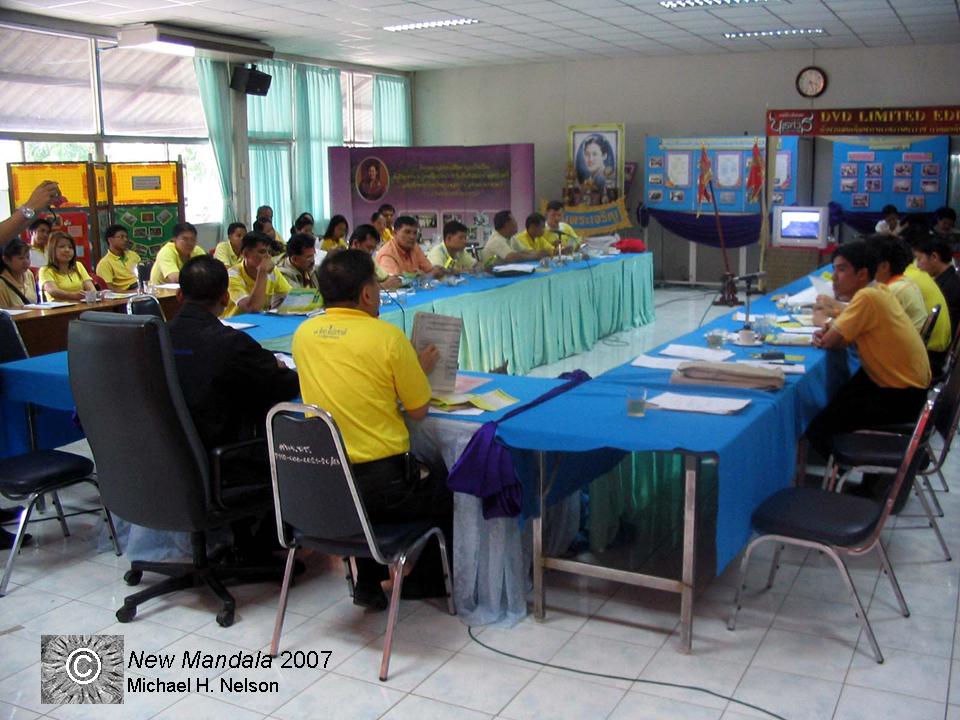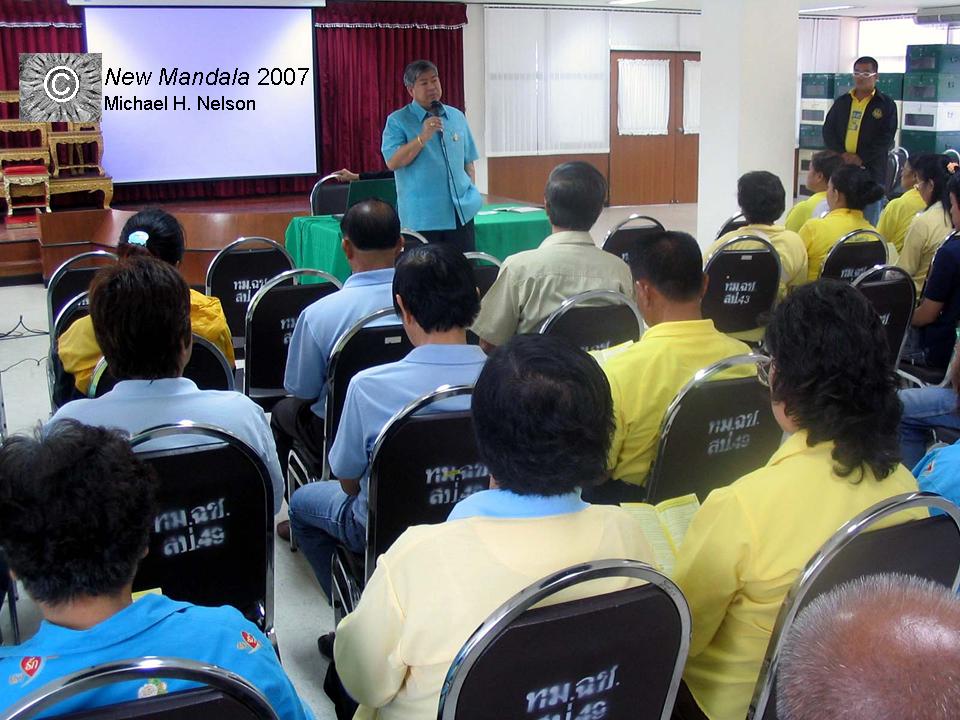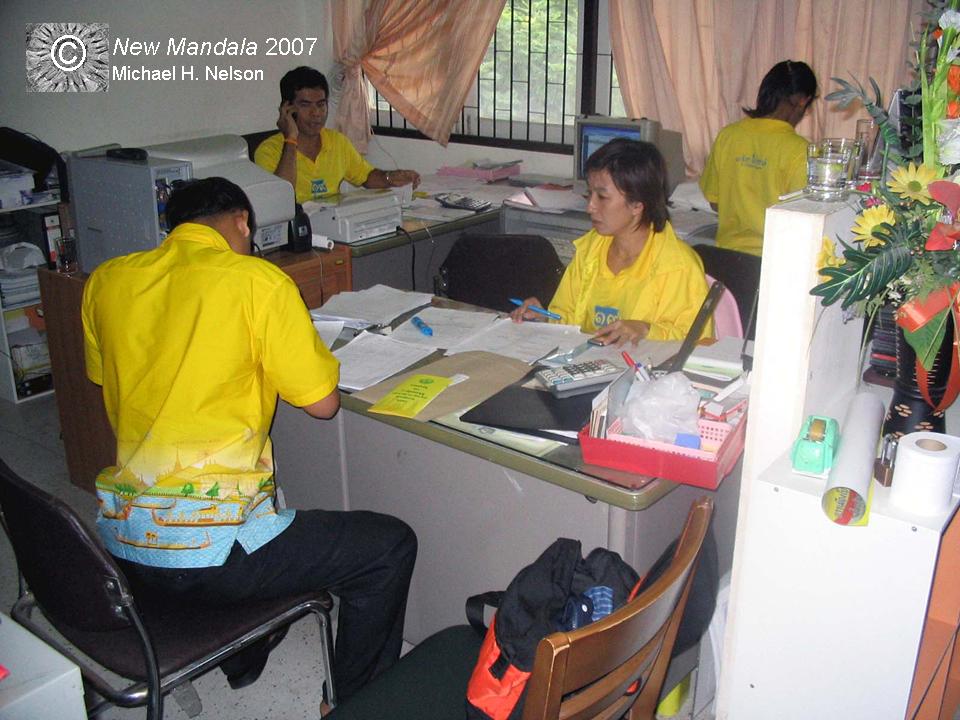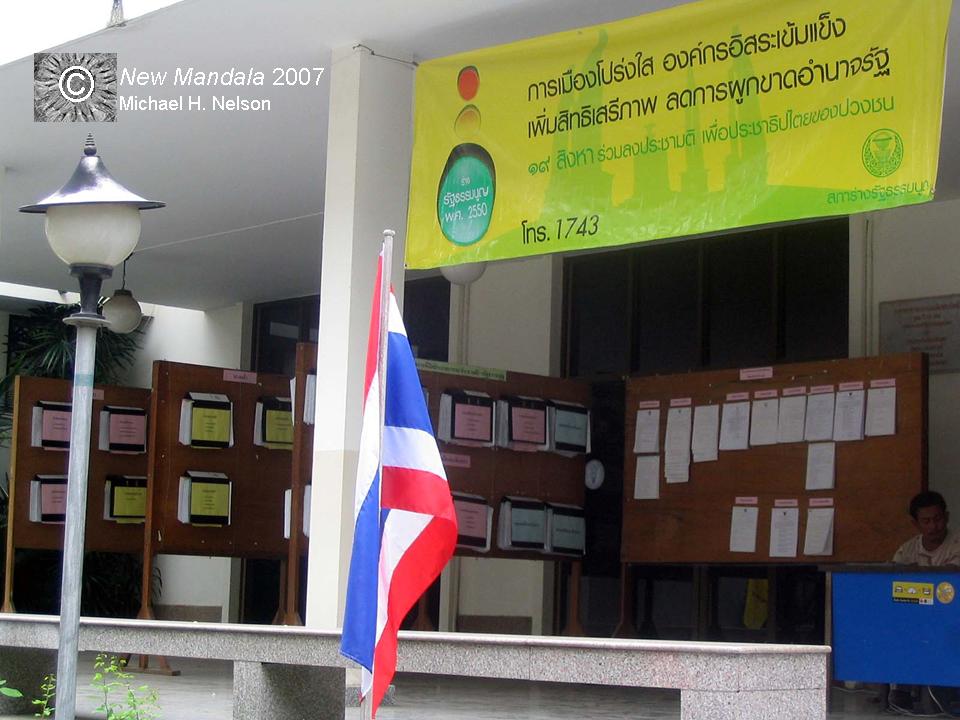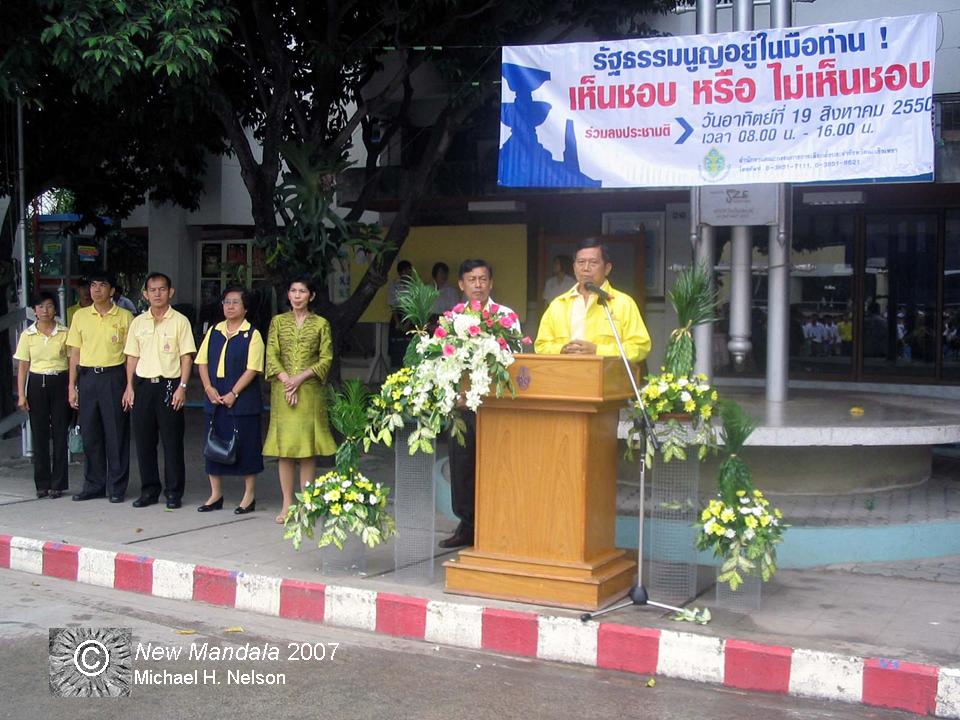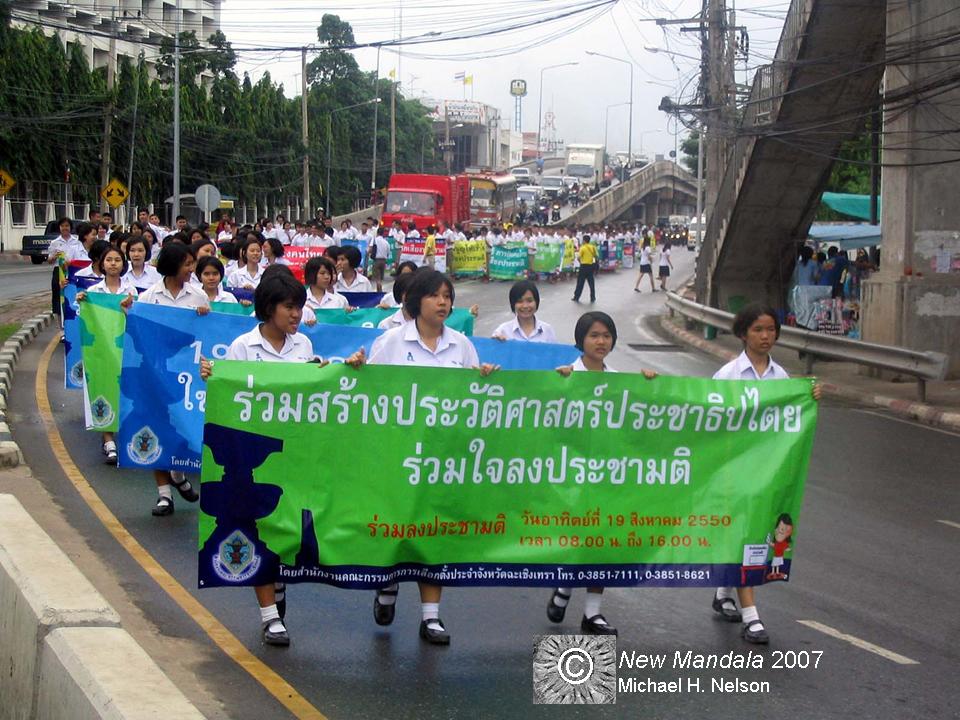This post is part of New Mandala’s month-long feature on Thailand’s 2007 constitution referendum.
In my previous post, I briefly reported on a provincial representative of the Constitution Drafting Assembly (CDA) giving a five-minute talk on the constitution at the monthly meeting of sections chiefs, kamnan, village headmen, and local governments at Bang Khla district. Almost all of the provincial CDA’s 31 public-relations activities planned for between July 12 and August 15 are of this kind. Below is a picture (Image 1) showing the chairperson of the provincial chamber of commerce addressing the monthly meeting of the heads of the Tambon Administrative Organizations’ permanent staff. His emphasis was on getting people to use their voting rights. He wanted to write history and achieve a 70% turnout. This was against academics who have predicted a turnout of only 40-50%.
Image 1: Meeting in Chachoengsao
One exception to this core approach was a one-hour meeting in Chachoengsao
Image 2: Provincial vice-governor’s speech
He emphasized the importance of a good turnout. Whether the constitution was accepted or rejected, there would be an election after one of the earlier constitutions had been adopted. His speech was followed by a number of promotional (or rather propagandistic) video clips produced by the CDA in Bangkok. The first clip claimed that this constitution-drafting process involved the most comprehensive participation of the people in Thai history. The second and third clips looked as if a political party was on the election campaign trail selling its policies, such as free quality education, free health care, social welfare for the elderly and disabled, and community rights. In short, “It is the intention of this constitution to bring state welfare services to all citizens.”
This meeting was particularly interesting because these communities are part of the municipal administrative structure. And this municipality is completely controlled by the Chaisaeng group, with no electoral competition. Thus, the CDA people tried to sell the constitution to people who belong to a political network that is firmly for the rejection of the constitution as decided by the Thai Rak Thai group.
The provincial CDA has also enlisted the 34 community radio stations of the province (better not ask to see their operating licenses) to advertise the constitution. The picture below (Image 3) shows the representative of one such station receiving his envelope with spots on CD and the leaflet to be read to the audience. From August 14 to 17, there will be promotional rallies of students in which 35 schools in all of the provinces 10 districts and one semi-district will participate.
Image 3: Promotional campaign
What do people think about the referendum? Not surprisingly, there is a range of opinions. The owners of a laundry shop reflected the official position by saying that they wanted to see the constitution passed first, while it could be amended later. They have long been staunch opponents of the Chaisaeng’s political domination of Chachoengsao municipality. Moreover, somebody had to get rid of Thaksin, because he had abused his power. On the other hand, an archetypical Chinese-Thai shopkeeper of 71 years was so vocal against the Surayud government, the decision to dissolve Thai Rak Thai, etc. that I do not expect him to approve the constitution. He said that in his heart he knew already how he would vote. The doctor treating my cold pointed out that all this was not actually about the content of the constitution. Rather, it was about a political fight between the anti- and the pro-Thaksin forces. He thought that, like in elections, voting was compulsory. Turnout might well benefit from this misunderstanding. A school director discussed the virtues of voting for or against the constitution with me, which included the question of whether Thailand would be better off had Thaksin stayed in power. She did not know yet how she would vote. She said she had listened to a number of people in order to form her own opinion. One day, when I bought my newspapers, a young man entered the shop and started talking to the shopkeeper about the fact that the constitution did not stipulate Buddhism as the national religion. He acknowledged that no constitution had done so. However, this point was reason enough for him to reject the draft. Finally, the editor of a local newspaper told me that a relative had dropped into her office the other day exclaiming, “This constitution comes from a revolt (kabot), not from the people! We cannot vote for it!” Asked whether she would cast her vote, she said, “Yes, the polling station is right behind my shop at the fire station. But whether I will vote in favor or against it is another matter.” The constitution was on her desk, and she expressed her intention to make some time for reading a few articles. Anyway, she had not put up the CDA’s pro-constitution sticker that I had given to her a few days earlier. This is perhaps not surprising, given that her father belongs to the Chaisaeng political camp as a municipal councilor.
Finally, the provincial election commission has continued its routine organizational procedures. Households have received notifications showing who of its members are eligible to vote in the referendum. The voter rolls have been put up in public places, such as the provincial hall (see Image 4), district offices, and the designated polling stations so that people might check whether their names are included.
Image 4: Voter Rolls
District-level civil servants have been trained to organize meetings to instruct the members of the polling station committees about their work. The Provincial Election Commission also tried to raise awareness of the referendum by organizing a promotional walk in Chachoengsao municipality in which four schools participated. The pictures below show the chairperson of the Provincial Election Commission opening the event (Image 5), and students walking on the main road (Image 6). Unfortunately, they did not carry megaphones with them to better get their message across nor did they distribute any of the informational leaflets produced by the Election Commission of Thailand and Provincial Election Commission to people who watched the rally passing by their shops.
Image 5: Speech by the chairperson of the Provincial Election Commission
Image 6: High school students’ march
So far, no anti-constitution activities have been visible in Chachoengsao. However, one former parliamentary candidate for the Democrat Party has erected a number of posters urging people to take part in the referendum.
 Facebook
Facebook  Twitter
Twitter  Soundcloud
Soundcloud  Youtube
Youtube  Rss
Rss 